Daryl Bell
When venturing into the world of food plotting, or planting trees, it is important to understand fertilizers. What fertilizers to use, how much fertilizer to apply, and when to apply them, are all key factors in accomplishing your overall goal. Different fertilizers affect plants in different ways, and they also may not affect one plant in the same way that they affect another. To be successful in your food plot management, it is important to take all of these factors into account.
When I first started planting food plots with my grandfather, some many years ago, there was nothing scientific about the process. We would disk the soil, spread whichever type of seed he had chosen, throw out a random fertilizer from the local co-op and pray for rain. Even though we harvested deer off these plots, one being my first deer ever at the age of eight, I wouldn’t call our food plot program a success.
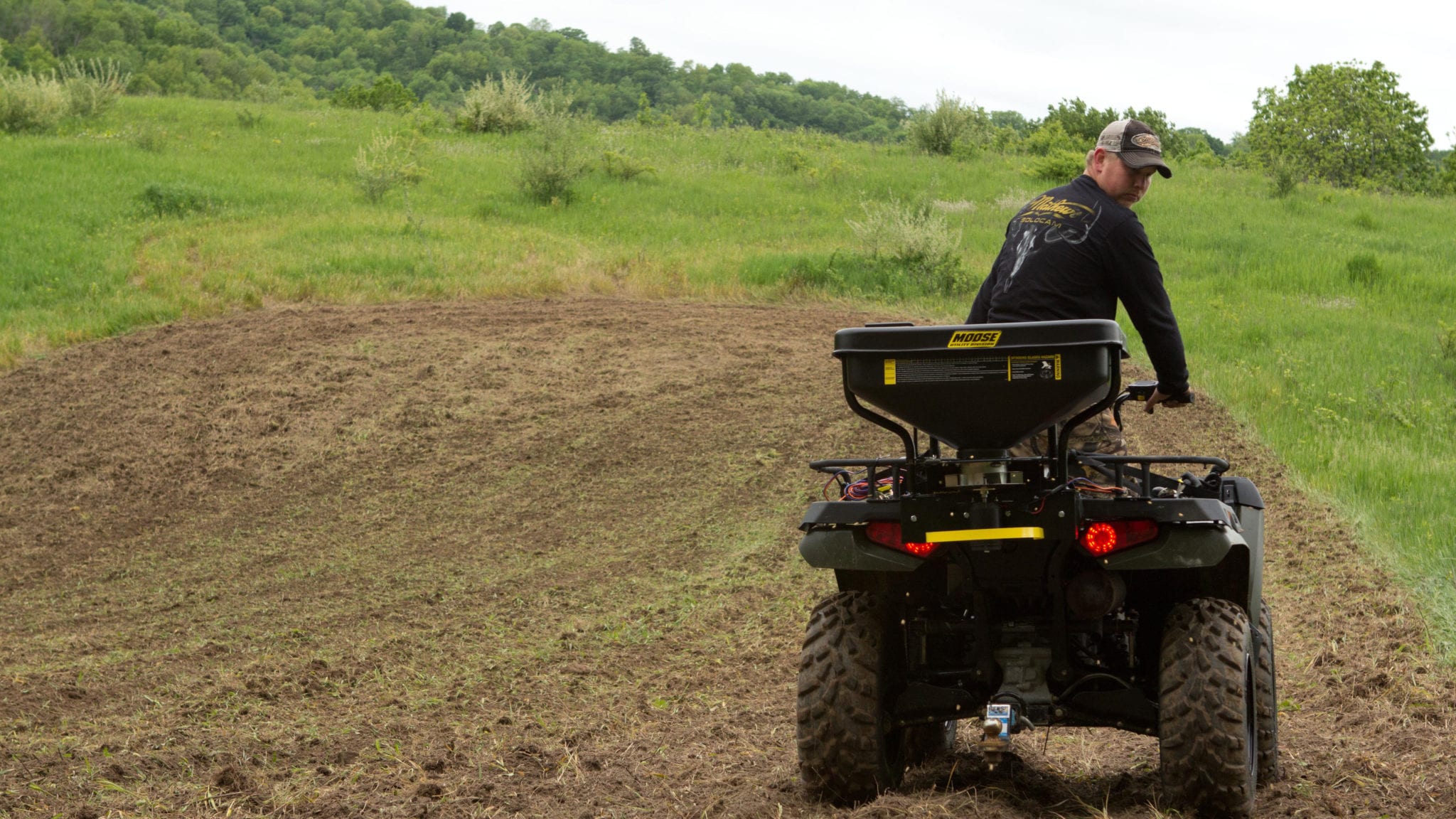
The Moose Utilities spreader can make your food plot chores a cinch.
In most cases, the plots would not exceed ankle height, and would not have an abundance of deer activity. However, come late winter, these plots would be the only green forage in the woods. I believe this contributed to the few deer that were sighted on the plots during daylight hours.
Since that time, I have always had a passion for improving the habitat, and growing forage for whitetails. This led me to really dive into the science behind planting food plots, trees, native grasses, and even turf grass. This eventually led to a full time career.
Part of my passion is sharing my extensive knowledge for growing habitat with like-minded outdoorsmen, especially the ‘do it yourself’ guy. In this article I will touch on everything from soil samples, fertilizers, fruit trees, and even tips on helping your acorn trees produce a better crop. Hopefully this knowledge will help you be successful when you get ready to grow new wildlife forage, this fall.
Liquid vs. Granular Fertilizers
Both liquid and granular fertilizers have their place in a well-planned fertilizer program. When it comes to choosing which one will work best for your situation the first question you need to ask yourself is why is the fertilizer being applied; is it for maintenance, deficiency management, or to work through a time of stress or damage?
If you are applying a fertilizer at the time of seeding or for maintenance purposes, a granular is best. A granular fertilizer is applied to the soil, taken up by the roots, and is translocated throughout the plant. This will not yield immediate results, however, the plants will be able to utilize these nutrients for far longer than if it was a foliar fertilization.
If an acute deficiency exists that requires corrective measures or the plant is under stress, low volume liquid applications are often made to allow absorption through the leaves. This method provides rapid results, but the results will be short lived due to the limited amount of nutrients applied. However, this is the best option to get the nutrients into the plant quickly when it has been compromised due to external factors. When applying a foliar application, low volume is very important. Apply too much and it will result in foliar burn on the plant. I also do not recommend foliar fertilizations in times of extreme heat.
If you have a severe nutrient deficiency in your soil, granular application is best. Applying a foliar fertilization has almost zero effect on your soil, which means it will not correct any nutrient deficiencies in the soil. If you have any severe nutrient deficiencies, your soil analysis from WAL will give you recommendations on how to correct those deficiencies.
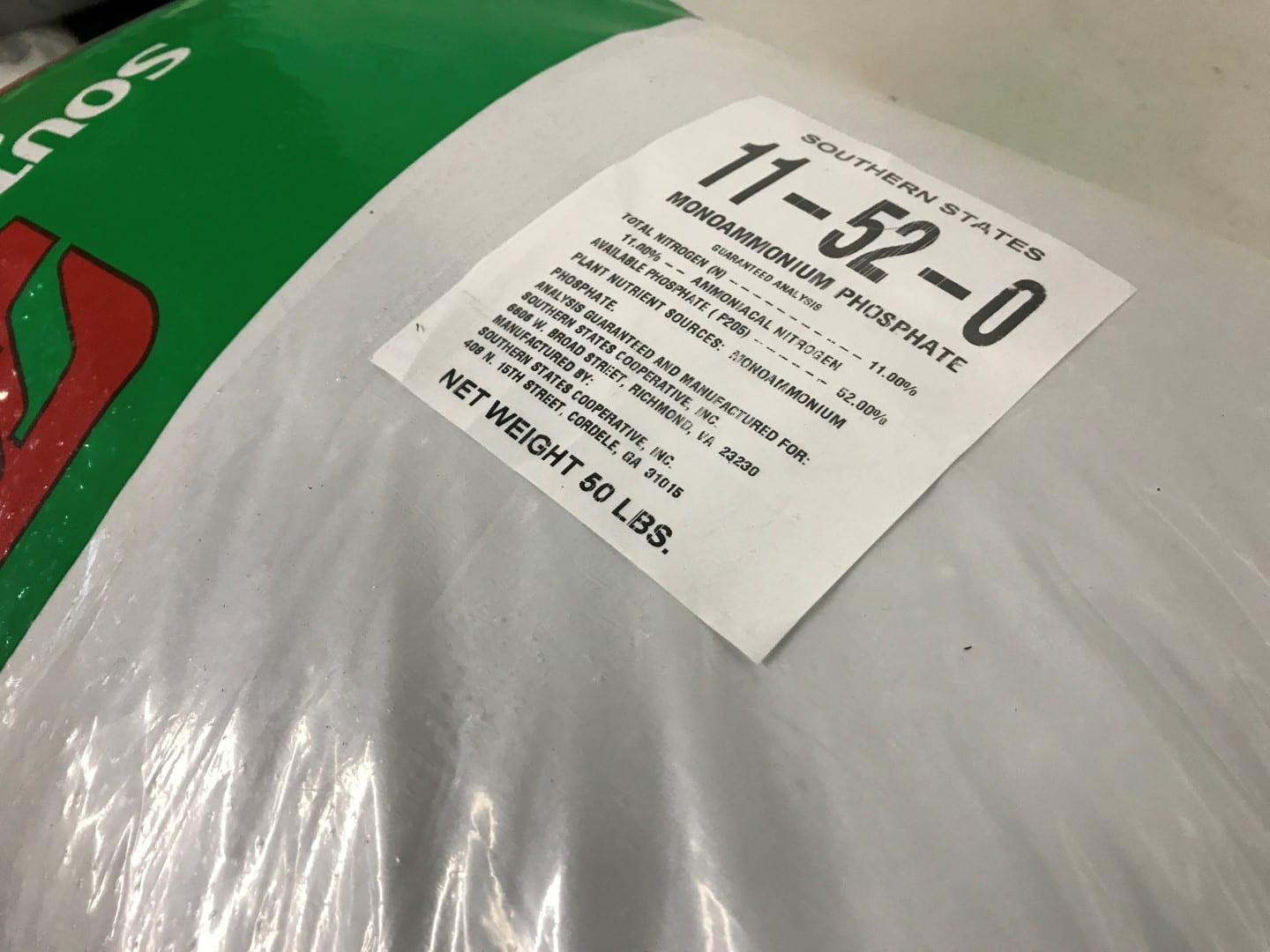
Are the fertilizers you use on your food plots actually helping, or hurting?
When to Fertilize
A question I get asked quite often is, “When should I fertilize?.” Again, this really comes down to your goals from the fertilization. If you are just getting your soil analysis back from the lab and have severe nutrient deficiencies, I recommend split granular applications of that nutrient. You will want to make the first application once the plants have germinated and have had a month to establish a root system. I would then wait two months to apply the second part of the corrective fertilization. It is important that you apply corrective fertilizers while a crop is actively growing. If there are no crops growing at the time of fertilization, the nutrients will leach to a sub level in the soil and the plants will not be able to utilize them.
If you have corrected all the nutrient issues in your soil and are just looking to maintain healthy forage, then your job is easy. My soil has been perfect for about 3 years on my newest lease. So I am able to maintain my nutrient levels with 2-3 fertilizations per year.
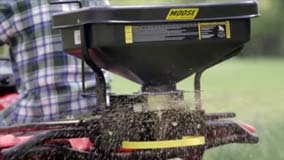
Knowing what and when to use a particular fertilizer product will make a difference in your food plots.
At the time of my fall planting, I always apply a 4-20-20 granular fertilizer. This fertilizer has 4% Nitrogen, 20% Phosphorus, and 20% Potassium. I don’t apply this fertilizer for soil amendment purposes, but simply to help the seed have a better germination rate. The Phosphorus aids in seed germination, and the potassium aids in root development. This will ensure that the seed has all the help it can get and ensure good germination.
Once all the acorns are off the ground and the deer are really utilizing my food plots, I will apply a Nitrogen Urea (46-0-0) to give my plots a jump start of new growth.
When you are looking at a bag of fertilizer, you will see 3 numbers. For example, 13-13-13. The first number on the bag is Nitrogen, the second number is Phosphorus, and the last number is Potassium. These numbers represent the percentage of active ingredient in the bag and are very crucial when choosing the right fertilizer. When correcting severe nutrient deficiencies in my soil, I tend to stick with the fertilizers listed below. Keep in mind; you may need certain micro nutrients which will require more balanced fertilizers. Your soil analysis will be a great tool to guide you in the right direction as far as which fertilizer you need to use. To order fertilizers, or to speak with an expert, visit www.southernstates.com.
Nitrogen
Nitrogen Urea: 46-0-0
Ammonia Nitrate: 33-0-0
Calcium Nitrate: 15-0-0
Ammonia Sulphate: 21-0-0
Phosphorus
Triple Super Phosphate: 0-45-0
Single Super Phosphate: 0-18-0
Potassium
Muriate of Potassium: 0-0-60
Sulphate of Potassium: 0-0-50
*Sulphur based fertilizers will affect ph levels
If you are like me, then you like to ask a lot of questions. It’s not necessary to know how every nutrient affects the plant, but it can’t help to know. I compiled this nutrient break down list a few years ago and it has actually come in handy quite a few times.
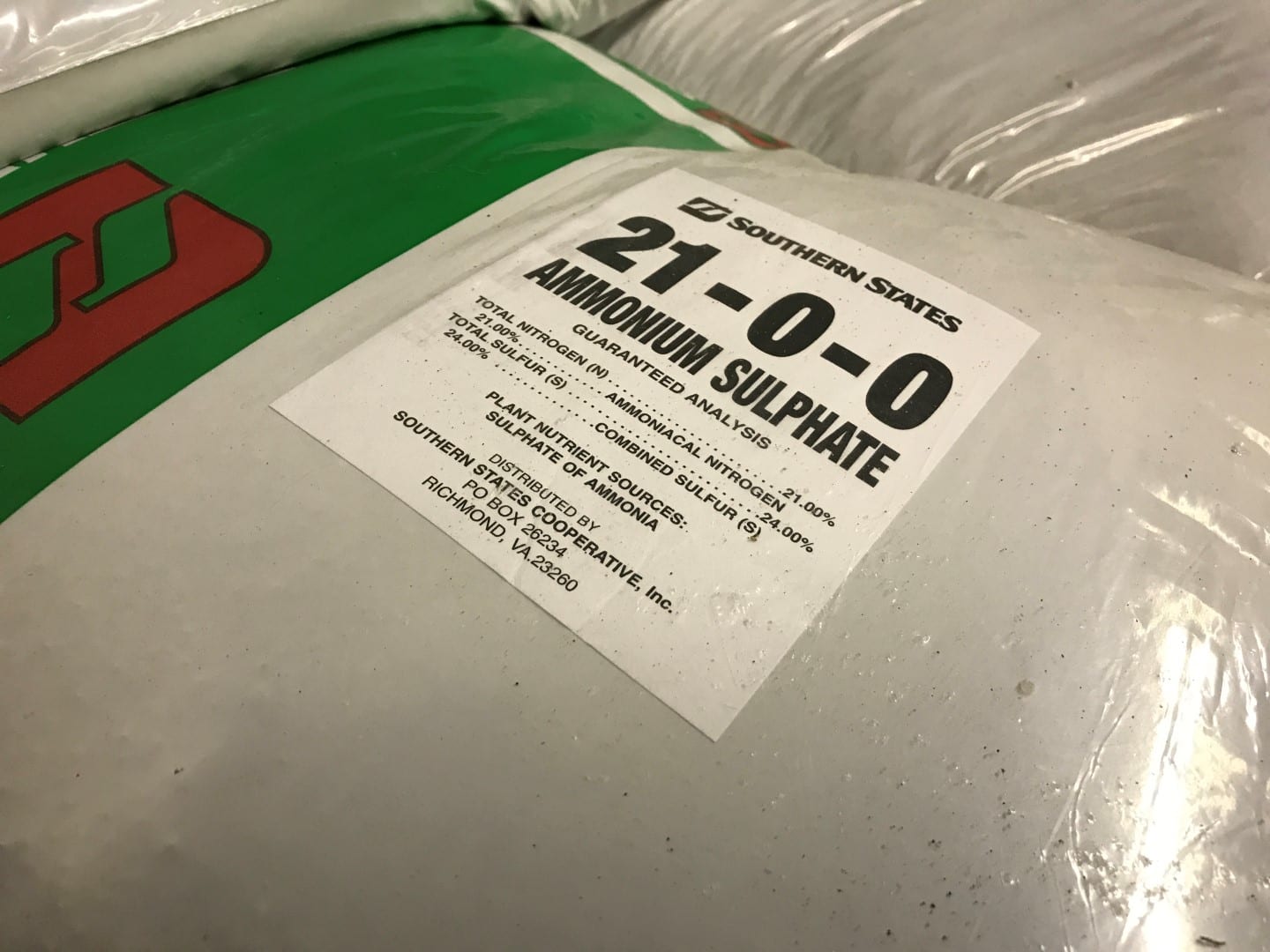
What kind of nutrients are you feeding your food plots?
Macro Nutrients
Nitrogen is essential in greening and growth of the plant. If you are
trying to promote a spike in new growth, this is the macro nutrient to
concentrate on.
Phosphorus is utilized in the formation of nucleic acids and other
chemicals which help in the development of flowering, fruit, early
maturity, and seed germination.
Potassium is essential in root development and also appears to promote
disease resistance. Potassium is also a great addition to any
fungicide or disease treatment.
Secondary Nutrients
Sulfur sometimes referred to as the “4th primary nutrient” since it
must be present to form a protein.
Calcium is used in root and leaf development. It is also combined with
other elements to form cell walls.
Magnesium is the central atom of the chlorophyll molecule, which makes
it necessary to photosynthesis.
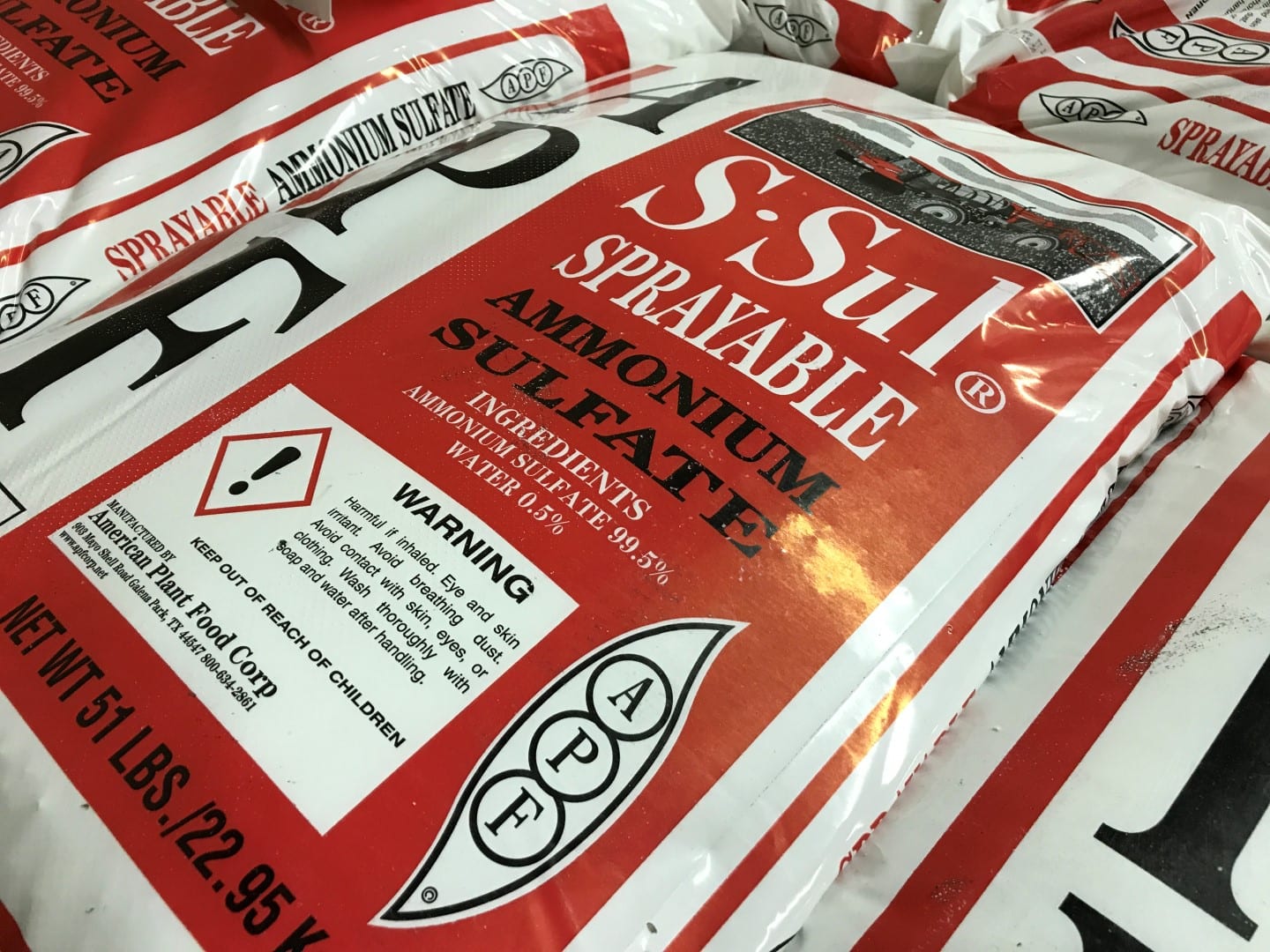
Sprayable fertilizer.
Micro Nutrients
Copper is necessary for chlorophyll formation and also acts as a
catalyst for other plant reactions.
Iron acts as a catalyst for chlorophyll formation and also carries
oxygen. It also helps form certain respiratory enzyme systems. These
functions make it critical to photosynthesis.
Boron is essential for germination of pollen grains. It also aids in
seed and cell wall formation.
Manganese accelerates germination and maturity. It also increases the
availability of phosphorus and calcium.
Zinc is necessary for the production of chlorophyll and carbohydrates.
It also aids in the production of plant grown substances.
Chlorine aids is photosynthesis and also helps promote a more disease
resistant plant.
Molybdenum helps facilitate a plants proper use of nitrogen.
Fertilizing Fruit Trees
Like food plots, when it comes to growing soft mass trees, having a soil analysis done is very important. It is the first step to having high fruit production, as well as having a sweeter crop. Unlike food plots, you can almost always get away with using one well balanced fertilizer, once soil deficiencies are corrected.
A 10-10-10 or 13-13-13 is what most people use to feed their fruit trees and these fertilizers work pretty well. However, it is very important that you use a fertilizer that is high in micro nutrients. Fruit bearing trees will tap into quite a few different micro nutrients in order to produce fruit.
When you go to your local co-op or fertilizer supplier, make sure to ask for a micro nutrient fertilizer. Personally, I use a 13-6-6 micro nutrient fertilizer on all of my fruit bearing trees. On multiple occasions, I have had customers tell me that the fruit from trees fertilized with that fertilizer, taste better than any fruit from other trees. Southern States is who I use for all my fertilizer needs. They carry every type of fertilizer you could possibly need and have a staff that can guide you in the right direction when selecting your fertilizer.
When & How Much
When to fertilize your fruit trees and how much to apply, is critical. Too much fertilizer and you can damage the root zone of the tree. Too little fertilizer and you won’t receive the results you are looking for.
Always remember; never fertilize your fruit trees after July. This will cause the tree to push out new growth and use up the energy it was storing in its root system for winter. Fertilize the tree in February the first year it is planted. On the first year, one cup of fertilizer is usually sufficient. If you notice any yellowing or nutrient deficiencies, apply another cup of fertilizer in May. Follow this same process the second year.
After the second year, a good rule of thumb is one pound of fertilizer per inch of trunk diameter. Follow this process for the remainder of the trees life. Be sure to spread the fertilizer evenly within the drip line of the tree. In the past, it was recommended to create a ring of fertilizer around the base of the tree, about 6 inches off of the trunk. However, this is known to cause root damage and I do not recommend it.
Oaks
If you are looking for the silver bullet to getting your oaks to produce high yields every year, I don’t have it. It has been proven over the years that fertilizing your oaks has virtually zero effect on acorn production. Also, oaks require acidity to produce acorns. So taking a soil analysis and bringing your ph level to a neutral point would be crippling to the tree.
The best thing you can do to ensure a better acorn crop is eliminate all the competition from within the drip line of the tree. Removing the competition will also cause the oak to not have to compete for water and nutrients and allow the crown of the tree to better develop. This will result in larger yields of acorns for years to come.
Conclusion
Growing food plots and fruit trees for wildlife can be complex, but it does not have to be hard. It is also a game changer when it comes to hunting and holding deer on your property. It is common knowledge that not everyone puts this amount of time and effort into creating quality food for whitetails. So, applying some of these tricks and tips can really make your property stand out among the crowd. I hope this article helps you put another trophy on your wall this fall. Happy growing.





